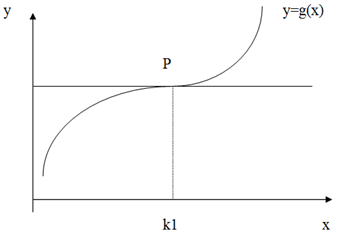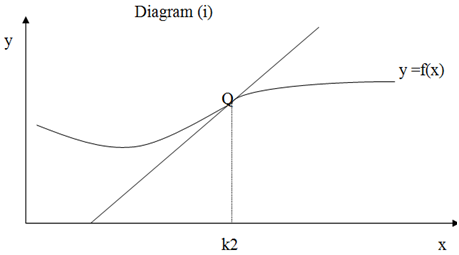Tests for relative minimum
For a relative minimum point there are two tests:
i.The first derivative, which is
(dy)/(dx) = f´(x) = 0
ii.The second derivative, which is
(d2y)/( dx2) = f´(x) > 0
Illustration:
For the function
h(x) = 1/3 x3 + x2 - 35x + 10
Find out the critical values and determine whether these critical values are minima or maxima. Determine the extreme values of the function
Solution
i. Critical values
h(x) = (1/3) x3 + x2 - 35x + 10 and
h´(x) = x2 + 2x - 35
By using first text,
Then h´(x) = x2 + 2x - 35 = 0
Or (x-5) (x+7) = 0
Thus x = 5 or x = -7
ii. The determinant of the minimum and the maximum points needs that we test the value x = 5 and -7 by using the second text
H´´(x) = 2x + 2
a) While x = -7 h´´(x) = -12 <0
b) While x = 5 h´´(x) = 12>0
There x = -7 provides a maximum point and x = 5 provides a minimum point.
iii. Extreme values of the function
h(x) = (1/3) x3 + x2 - 35x + 10
While x = -7, h(x) = 189 2/3
While x = 5, h(x) = -98 1/3
The extreme values of the function are h(x) = 189 2/3 that is a relative maximum and h(x) = -98 1/3 , a relative minimum
a) Points of inflexion
The following given are two graphs, points of inflexion can be determined at points P and Q as given below:


The points of inflexion will occur at point P when
g´´(x) = 0 at x = k1
g´´(x) < 0 at x < k1
g´´ (x) > 0 at x > k1
And at point Q while
f´´(x) = 0 at x = k1
f´´(x) > 0 at x < k1
f´´(x) < 0 at x > k1